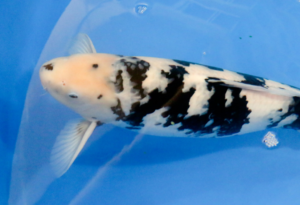
In many cultures, particularly in the East, the koi or carp is considered a very lucky charm. In feng shui, a pair of koi is used as a good luck symbol for a happy marriage, and the Japanese believe that having a koi pond in your home brings fortune and good luck.
If you don’t understand why so many good things are associated with koi, then you’ve probably never watched one of them swim in a pond—something koi aficionados find very relaxing. They’re also quite beautiful; the shape of the fish, coupled with its colors and markings, create fascinating patterns as they glide through the water. There is a whimsical Japanese term for people who love all things koi: “koikichi” or “koi crazy,” and once you’ve encountered your first koi, you may begin to understand what it’s all about.
Hobbyist and winning koi show participant (his most recent being a size category award at the recent 2015 Philippine National Koi Show) Edward Bolinao (and a few others who respectfully declined to be identified for privacy reasons) shared their expertise about this beautiful ornamental fish with Animal Scene.
THE REWARDS OF KEEPING KOI – The main appeal of koi, Edward and his fellow expert hobbyists say, is in its being an ornamental fish, appreciated for its grace and beauty. That’s why, even though they are edible, few actually eat koi, which are generally kept in households—mostly in Japan and China—in ponds.

After they began to be exported outside Japan several decades ago, enterprising Pinoys began breeding the fish locally; today, farms can be found all over the country. Hobbyists, though, consider that the best koi, in terms of quality, come from Japan.
The reason why Edward keeps koi is something other hobbyists share. “Keeping koi is a form of stress relief. Coming home to see your koi swimming gracefully in the pond gives you peace and tranquility.”
There’s also the technical considerations of keeping koi that appeals to koi hobbyists. “Keeping high quality koi also challenges your koi keeping skills. Buying an expensive koi does not ensure that it will come out as a show contender. This is where the hobby becomes a personal challenge: to see if you can maintain and develop a quality koi and maximize its potential,” he explains.
The koi is considered to be lucky in many cultures. This is why he and his colleagues appreciate regular shows for koi as these provide them with a venue for gauging how well they’re doing, how their koi keeping skills measure up to those of others, and how their koi are doing overall. While the competition is important, the socialization and the chance to meet others who keep koi and compare notes about koi and koi keeping is more valuable.
The good news is that the koi competitive scene has grown exponentially over the years, especially in terms of quality of the koi entered. It’s come to the point that even the international judges of this year’s Philippine National Koi Show commented that it was at par with some of the big koi shows held in Japan, Edward notes.

SURPRISINGLY EASY TO CARE FOR-IF YOU CAN COMMIT- Keeping koi is not that hard, Edward says. He and his colleagues recommend against keeping the fish in aquariums. “Your koi will not be able to grow and besides, the best way to view the koi especially the pattern and body shape is from the top. Best if you have a space in your yard or garage for a decent sized pond that has filtration. For high quality koi, rule of thumb is 1 koi per 1 ton of pond. This formula is intended to help your koi attain maximum size and growth. Some varieties of koi, if kept well, can grow to 1 meter or more. But in the Philippines, if you grow your koi to 80 centimeters and still retain its quality, this is already a big achievement.”
So who would make ideal owners for koi? More importantly, will aspiring koi owners need special equipment? What kind of aquarium or pond do they need?
As koi are best kept in ponds, their opinion is that the basic requirement is an open space big enough for your intended stocking level. You will need a good mechanical and biological filtration system, plus air pumps. Partial shade or a cover for the pond is ideal to prevent too much sun exposure; this will also help keep water temperatures in the pond low. “More than the equipment however, it is the willingness to spend time and clean and maintain the pond setup which is vital. Since koi are living things, proper care and maintenance are essential.”
Their shared experience has also taught them several important things to be mindful of as they raise their koi—and they also share the rookie mistakes they made so that others won’t make them.
Photos by Jeffrey Lim
This story appeared in Animal Scene’s April 2015 issue.






